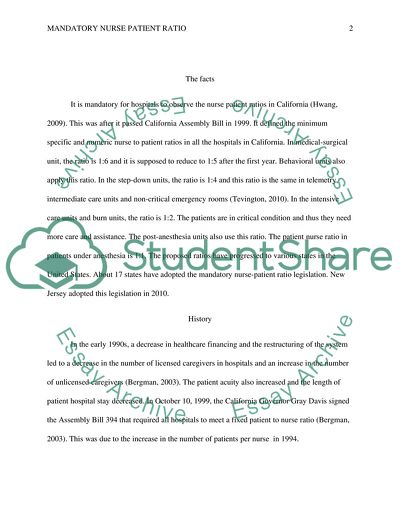Opinion Assignment Essay Example | Topics and Well Written Essays - 500 words. https://studentshare.org/nursing/1770091-mandatory-nurse-patient-ratio
Opinion Assignment Essay Example | Topics and Well Written Essays - 500 Words. https://studentshare.org/nursing/1770091-mandatory-nurse-patient-ratio.


